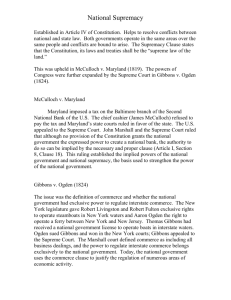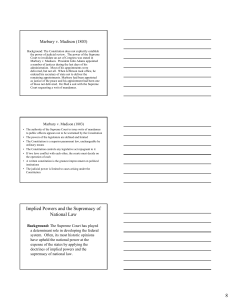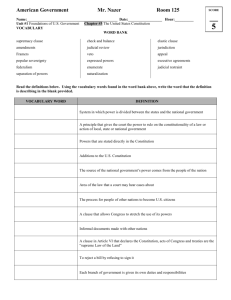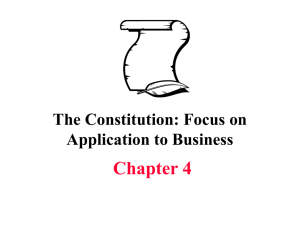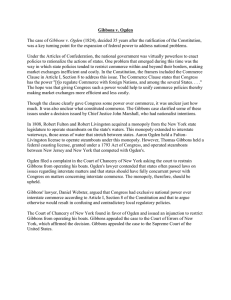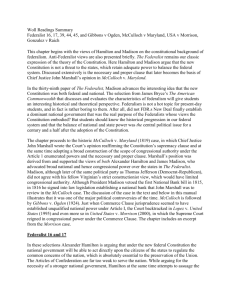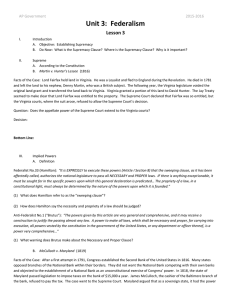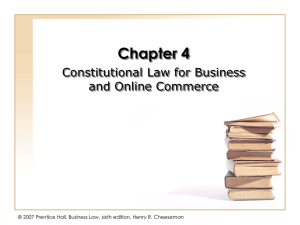Judicial Branch - Baltimore City Public School System
advertisement
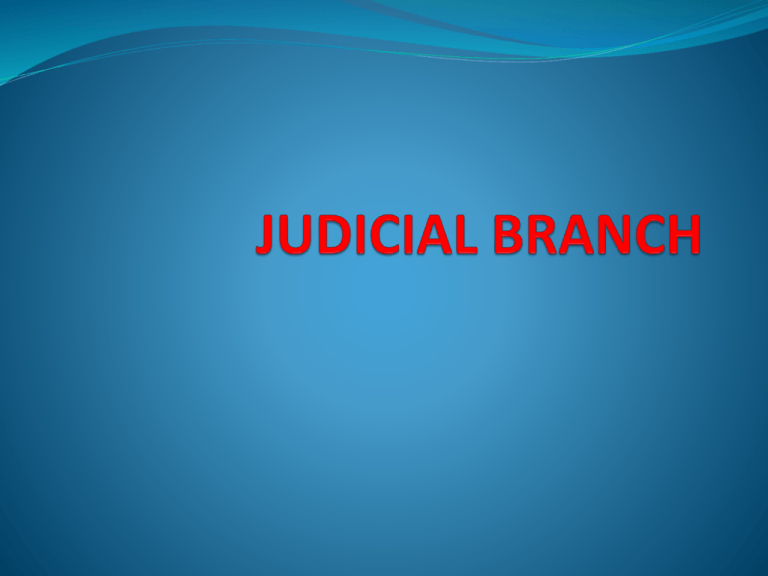
Courts The point of the courts is to provide a place where we can argue about matters relating to the law. The point of lawyers is to help people argue their positions better. Lawyers are good at arguing, and they know the law and how courts have decided similar cases. Example: The United States Supreme Court (9 Justices) Justices We call the judges in the Supreme Court justices. Judicial Review • The power of the courts to determine the constitutionality of the actions of the legislative and executive branches of government. • Example: The precedent for Judicial Review was established in the 1803 case of Marbury v. Madison. “...Few things were better known, than the immediate causes which led to the adoption of the present constitution ... that the prevailing motive was to regulate commerce; to rescue it from the embarrassing and destructive consequences, resulting from the legislation of so many different States, and to place it under the protection of a uniform law.” —Chief Justice John Marshall Key Principles Federalism – roles of government are divided up between the different levels of government National Supremacy – the federal government shares powers with the state/local governments, but the federal government has more power and can override the state/local government. Commerce Clause - Refers to Article 1, Section 8, Clause 3 of the U.S. Constitution, which gives Congress the power “to regulate commerce with foreign nations, and among the several states, and with the Indian tribes.” Elastic Clause – Refers to Article 1, Section 8, Clause 18 of the U.S. Constitution, which gives Congress the power “to make all Laws which shall be necessary and proper for carrying into Execution the foregoing Powers, and all other Powers vested by this Constitution in the Government...” Key Vocabulary Key Idea Implied Powers Definition Powers that belong to Congress even though it is not directly stated in the Constitution Interstate Economic activity involving Commerce more than one state. States’ Rights, Commerce Clause Background of the Case In 1808, the government of New York granted a steamboat company a monopoly to operate its boats on the state's waters, which included bodies of water that stretched between states. Aaron Ogden held a license under this monopoly to operate steamboats between New Jersey and New York. Thomas Gibbons, another steamboat operator, competed with Aaron Ogden on this same route but held a federal coasting license issued by an act of Congress. Ogden filed a complaint in New York court to stop Gibbons from operating his boats, claiming that the monopoly granted by New York was legal even though he operated on shared, interstate waters. Gibbons disagreed arguing that the U.S. Constitution gave Congress the sole power over interstate commerce. After losing twice in New York courts, Gibbons appealed the case to the Supreme Court…. The ruling will be provided, with double-sided notes and questions to be completed for homework. Summary of the Decision Gibbons v. Ogden (1824) The Supreme Court determined that the commerce clause of the Constitution grants the federal government the power to determine how interstate commerce is conducted. So, because Gibbons had a license to operate from the federal government, the state of New York could not deny him the right to operate. The commerce clause and the supremacy clause gave the federal government the power to regulate the shipping commerce, and not to have the state overrule its regulations. McCulloch v. Maryland (1819) A landmark decision by the Supreme court. Said two main things: First, the Constitution grants to Congress implied powers for implementing the Constitution's express powers, in order to create a functional national government. Second, state action may not impede valid constitutional exercises of power by the Federal government.
